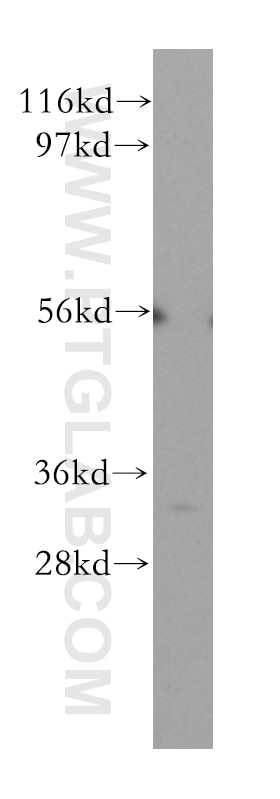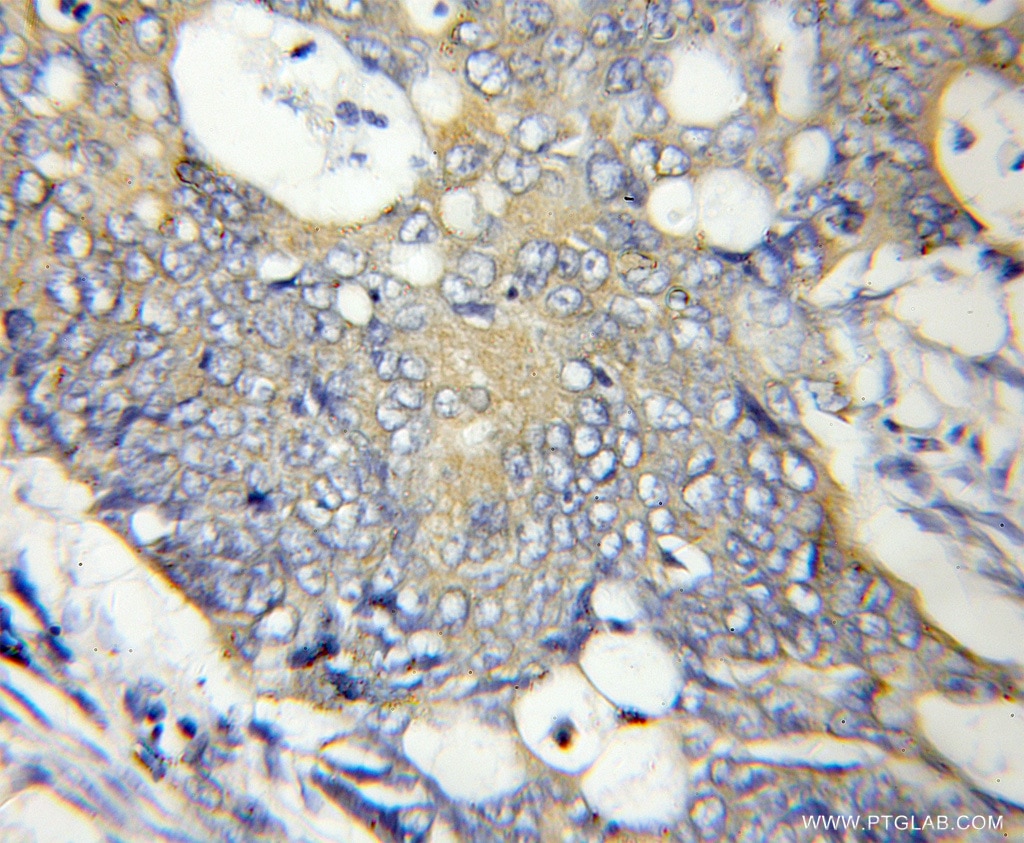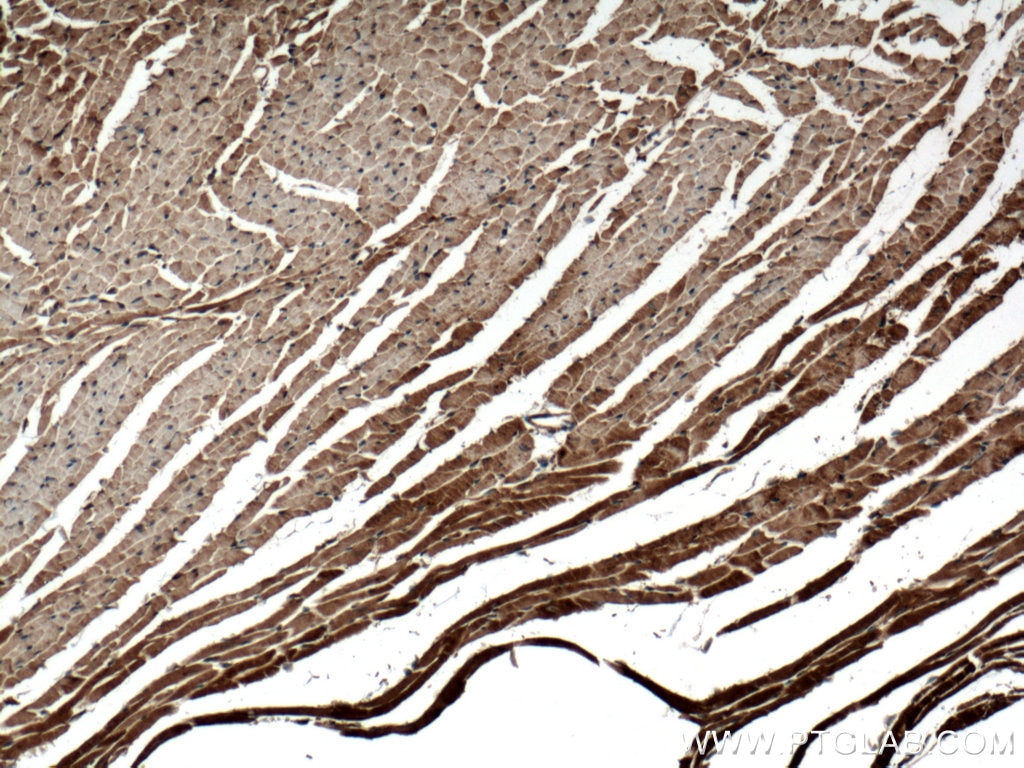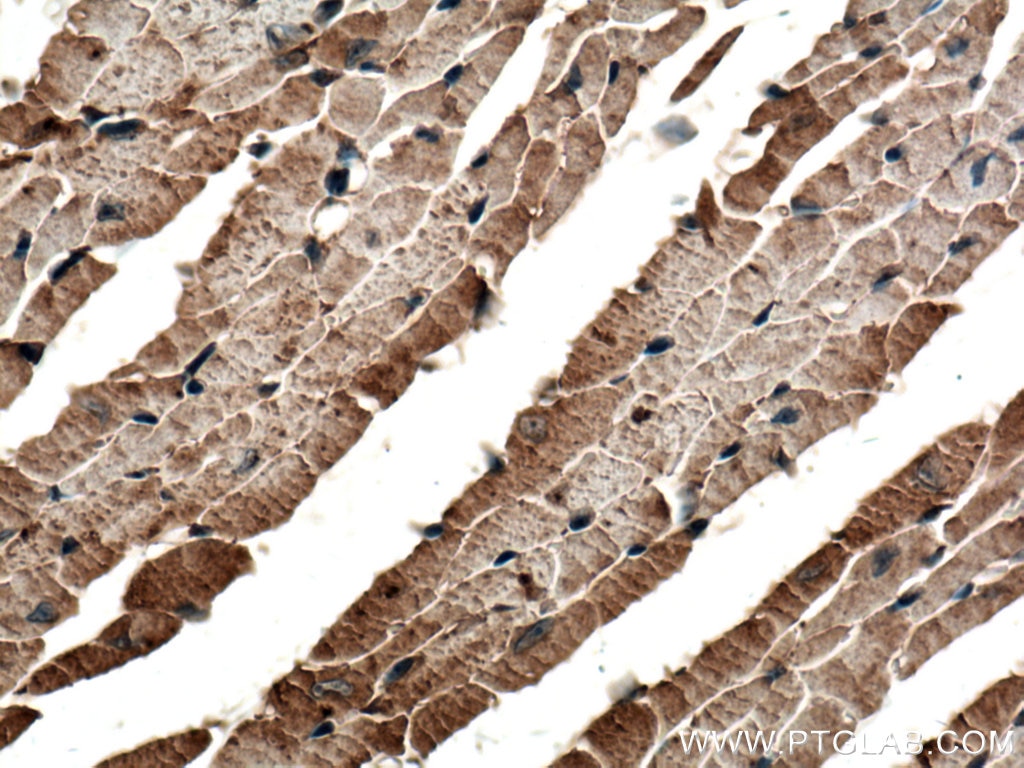Tested Applications
| Positive WB detected in | HEK-293 cells |
| Positive IHC detected in | human colon cancer tissue, mouse heart tissue Note: suggested antigen retrieval with TE buffer pH 9.0; (*) Alternatively, antigen retrieval may be performed with citrate buffer pH 6.0 |
Recommended dilution
| Application | Dilution |
|---|---|
| Western Blot (WB) | WB : 1:500-1:1000 |
| Immunohistochemistry (IHC) | IHC : 1:20-1:200 |
| It is recommended that this reagent should be titrated in each testing system to obtain optimal results. | |
| Sample-dependent, Check data in validation data gallery. | |
Published Applications
| WB | See 1 publications below |
Product Information
11598-1-AP targets ATPAF2 in WB, IHC, ELISA applications and shows reactivity with human, mouse, rat samples.
| Tested Reactivity | human, mouse, rat |
| Cited Reactivity | rat |
| Host / Isotype | Rabbit / IgG |
| Class | Polyclonal |
| Type | Antibody |
| Immunogen |
CatNo: Ag2164 Product name: Recombinant human ATPAF2 protein Source: e coli.-derived, PGEX-4T Tag: GST Domain: 1-289 aa of BC032126 Sequence: MWRSCLRLRDGGRRLLNRPAGGPSASMSPGPTIPSPARAYAPPTERKRFYQNVSITQGEGGFEINLDHRKLKTPQAKLFTVPSEALAIAVATEWDSQQDTIKYYTMHLTTLCNTSLDNPTQRNKDQLIRAAVKFLDTDTICYRVEEPETLVELQRNEWDPIIEWAEKRYGVEISSSTSIMGPSIPAKTREVLVSHLASYNTWALQGIEFVAAQLKSMVLTLGLIDLRLTVEQAVLLSRLEEEYQIQKWGNIEWAHDYELQELRARTAAGTLFIHLCSESTTVKHKLLKE Predict reactive species |
| Full Name | ATP synthase mitochondrial F1 complex assembly factor 2 |
| Calculated Molecular Weight | 289 aa, 33 kDa |
| Observed Molecular Weight | 33 kDa |
| GenBank Accession Number | BC032126 |
| Gene Symbol | ATPAF2 |
| Gene ID (NCBI) | 91647 |
| RRID | AB_2063032 |
| Conjugate | Unconjugated |
| Form | Liquid |
| Purification Method | Antigen affinity purification |
| UNIPROT ID | Q8N5M1 |
| Storage Buffer | PBS with 0.02% sodium azide and 50% glycerol, pH 7.3. |
| Storage Conditions | Store at -20°C. Stable for one year after shipment. Aliquoting is unnecessary for -20oC storage. 20ul sizes contain 0.1% BSA. |










